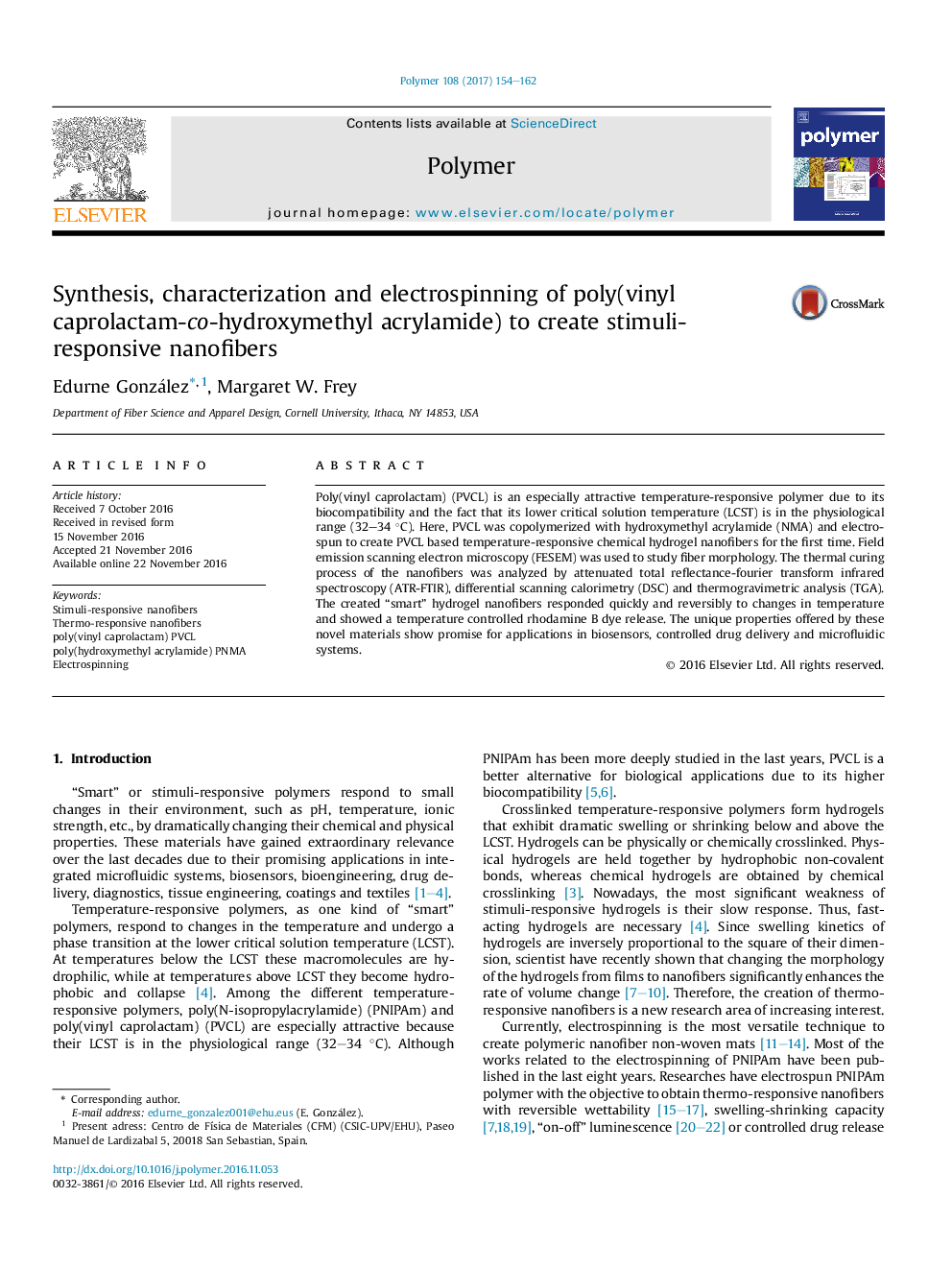| کد مقاله | کد نشریه | سال انتشار | مقاله انگلیسی | نسخه تمام متن |
|---|---|---|---|---|
| 5178492 | 1502498 | 2017 | 9 صفحه PDF | دانلود رایگان |

• P(VCL-co-NMA) copolymers were synthesized, characterized and electrospun.
• FTIR, DSC and TGA were used to analyze the crosslinking process of the nanofibers.
• Samples swelled and shrunk quickly and reversibly below and above the LCST.
• Nanofibers showed a temperature controlled rhodamine B dye release.
Poly(vinyl caprolactam) (PVCL) is an especially attractive temperature-responsive polymer due to its biocompatibility and the fact that its lower critical solution temperature (LCST) is in the physiological range (32–34 °C). Here, PVCL was copolymerized with hydroxymethyl acrylamide (NMA) and electrospun to create PVCL based temperature-responsive chemical hydrogel nanofibers for the first time. Field emission scanning electron microscopy (FESEM) was used to study fiber morphology. The thermal curing process of the nanofibers was analyzed by attenuated total reflectance-fourier transform infrared spectroscopy (ATR-FTIR), differential scanning calorimetry (DSC) and thermogravimetric analysis (TGA). The created “smart” hydrogel nanofibers responded quickly and reversibly to changes in temperature and showed a temperature controlled rhodamine B dye release. The unique properties offered by these novel materials show promise for applications in biosensors, controlled drug delivery and microfluidic systems.
Figure optionsDownload high-quality image (240 K)Download as PowerPoint slide
Journal: Polymer - Volume 108, 13 January 2017, Pages 154–162